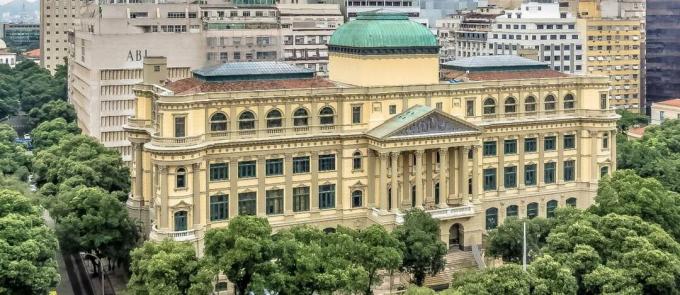With the change of Portuguese Royal Family for Brazil, the country became part of the United Kingdom, together with Portugal and the Algarves. This condition caused the nation to cease to be a Cologne.
The implementation of Royal Library in Brazil happened after the transfer of the Portuguese court to Brazilian territory, in 1808.
see more
Scientists use technology to unlock secrets in ancient Egyptian art…
Archaeologists discover stunning Bronze Age tombs in…
As one of the transformations promoted by the prince regent d. John in pursuit of development.
Considered a dependency of the Royal House and a property of the king, its establishment did not take place through a formal act of institution. However, its first reference in legislation occurred through the decree of June 27, 1810.
This suggested installing him inside the Hospital da Ordem Terceira do Carmo, together with the Cabinet of Physics and Mathematics Instruments, coming from Lisbon.
Thus, the official milestone of its installation is the decree of October 27, 1810, revoking the one of June 27.
He implemented the Royal Library in the space of the catacombs of the Carmo religious, allied to the Royal Chapel.
The spread of paper and the invention of the press raised the relevance of libraries throughout Europe, in addition to boosting the creation of real libraries in many countries.
However, the history of the library transferred to Brazil began in the reign of d. José I (1570-1777).
The initial collection is the result of what little was left of the destruction that occurred in the Lisbon earthquake in 1755. Gradually, the collection was reconstructed. This with the purchase of private collections, donated materials and the collection of sets left in the monasteries or abdicated by the Jesuits, after their expulsion in 1759.
The collections were divided into two categories: the royal library and that of the infantado. The royal library was restricted to monarchs, while that of the infantado was intended for the education of their children.
At the time, it constituted the Royal Court Public Library, being accessible to the public in 1797. However, with the transfer of the court, part of its collections were sent to Brazil.
d. João had the intention, when bringing the first printing instruments to Brazil, to create the Royal Print (Royal Press). This would popularize the culture and trade of books.
Through royal printing, the first book was printed in Brazil – Marília de Dirceu, by Tomás Antônio Gonzaga. Furthermore, d. João had the 60,000 volumes available at the Portuguese Royal Library brought.
So it took him three ship voyages to bring them all.
In 1821, to D. João and his court returned to Portugal, part of the documents and books were taken back to Europe. However, even so, a good part remained in the collection of the library in Rio de Janeiro.
In the year 1822, the Royal Library took the name of Imperial and Public Library.
Already in the period of the Republic, it was baptized as National Library, gaining a new headquarters: Avenida Rio Branco, 219, in the center of Rio de Janeiro, at Praça Cinelândia.
The inauguration of the new headquarters took place on October 29, 1910, one hundred years after the decree of the Royal Library by D. John.

You may also like:
